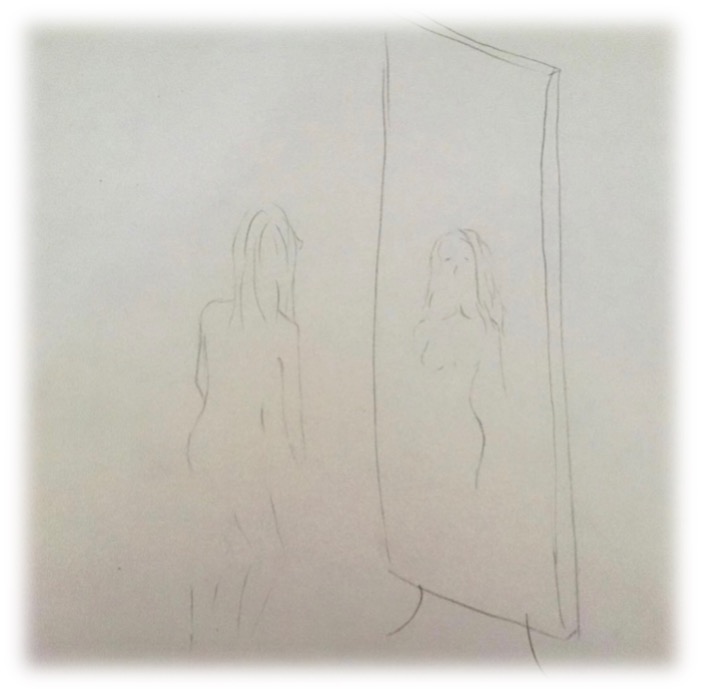Meet the Makers Blogs
“Multisensory storytelling – Dancing by looking” – Lisa van den Burg
On December 6th, I met multi-sensory storyteller Grace Boyle in an online session of Meet the Makers. This initiative is part of Transmission in Motion, which is a research community that provides a platform for meetings, seminars, and presentations between researchers, artists, and students from across disciplines. Grace is the founder and director of the London-based studio The Feelies which creates original multisensory XR content. XR is short for extended reality in which the X represents a variable that can stand for any letter, altering the way we view and interact with reality by combining real and virtual environments. Through engaging and working with perfumery, perception science, and creative technology The Feelies develops a way of writing, shooting, and performing multisensory stories.
Grace tells us about senses, how we make sense of senses, and about the hierarchy of senses. She mentions how in the last decades in Western performances the focus of storytelling is very much on vision, which is now seen as the dominant sense. Grace explains how the cross-modality of the senses, vision and hearing is quite comfortable for humans because the crossing of these two senses is regularly present in the current discourse of film and television. These senses, although we perceive all senses through our body, are mostly put to work by cognitive reasoning. Grace believes that by approaching senses through bodily experience we can gather much more information that can enrich our perception. To explain this, Grace tells about the existence of not just 5, but up to 33 senses, referring amongst others to proprioception, the sense of knowing where one’s limbs are in space; interoception, sense of one’s own heartbeat; and chronoception, the internal sense of time of a human’s body.

Figure 1. van den Burg, Lisa M. March 3rd, 2018. “Mirroring”. Digital image. Private collection.
In this session, Grace mentions the separation between body and mind and advocates for embodied cognition. I very much recognize this division between body and mind in my studies of dance, in which, for a long time, I tried dancing ‘with my head’. By constantly seeing myself in the mirror and through watching a teacher or choreographer perform the required movement sequence, I envisioned myself dancing this sequence, which constantly made me aware of how it should look, instead of feeling my body dance and searching for my own embodiment of a choreography. So, in a certain way you could say that for me vision was the most dominant sense in dancing as well.
Looking at proprioception as a sense in this respect, I maybe was too much aware of where my limbs were in space, directly relating to where they, according to my mind, should be in space. After I envisioned my limbs in space I placed them there, while rather a dancer should feel where their limbs are in space through an embodiment of a movement as an extension from their core. By slowly learning to shut my mind off, my body had more freedom to move and to really sense how the environment, assignment or other bodies were inviting me to move from my core. For me, movement coming from a body’s core invites certain freedom. In the end, when the dancer embodies every possible movement from the core, the movements make sense and are of contribution to a body’s language. Reflecting on my experience as a dancer I think an embodiment of every sound, smell, feeling, or sight can exist by translating these felt sensations into movement. This embodiment has to do with associations of such senses, instead of envisioning or portraying a sense.
Looking at dance from the perceiver’s side, interestingly, dance is mostly perceived through vision. However, referring to the concept of kinesthetics which is broadly discussed by Susan Leigh Foster, perceiving dance can be an embodied – and sensory – experience as well. This way, through its physical act, dance might also be seen as the multisensory storytelling Grace is referring to.
References
- Blakemore, Colin. 2014. “Rethinking the senses: Uniting the Philosophy and Neuroscience of Perception.” Arts and Humanities Research Council, https://www.sciculture.ac.uk/project/rethinking-the-senses/.
- Future of Story Telling. “Grace Boyle.” Accessed December 9, 2021. https://futureofstorytelling.org/speaker/grace-boyle.
- Future of Story Telling. “Tasting Sounds. Hearing Flavors: Multisensory Storytelling. Accessed December 9, 2021. https://futureofstorytelling.org/video/grace-boyle-tasting-sounds-hearing-flavors-multisensory-storytelling.
- Foster, Susan Leigh. 2008. “Movement’s contagion: the kinesthetic impact of performance.” In The Cambridge Companion to Performance Studies, edited by Tracy Davis, 46-59. Cambridge: Cambridge University Press. DOI: 10.1017/CCOL9780521874014.004.
- Utrecht University. 2021. “Meet the Makers: Grace Boyle.” Grace Boyle (The Feelies) and
- Lianne Toussiant (Utrecht University). Transmission in Motion (blog), Utrecht University. December 6, 2021. https://transmissioninmotion.sites.uu.nl/meet-the-makers-grace-boyle/.
- World Arts and Cultures/Dance. “Susan Leigh Foster.” Accessed January 19, 2022. https://www.wac.ucla.edu/people/faculty/susan-leigh-foster.

